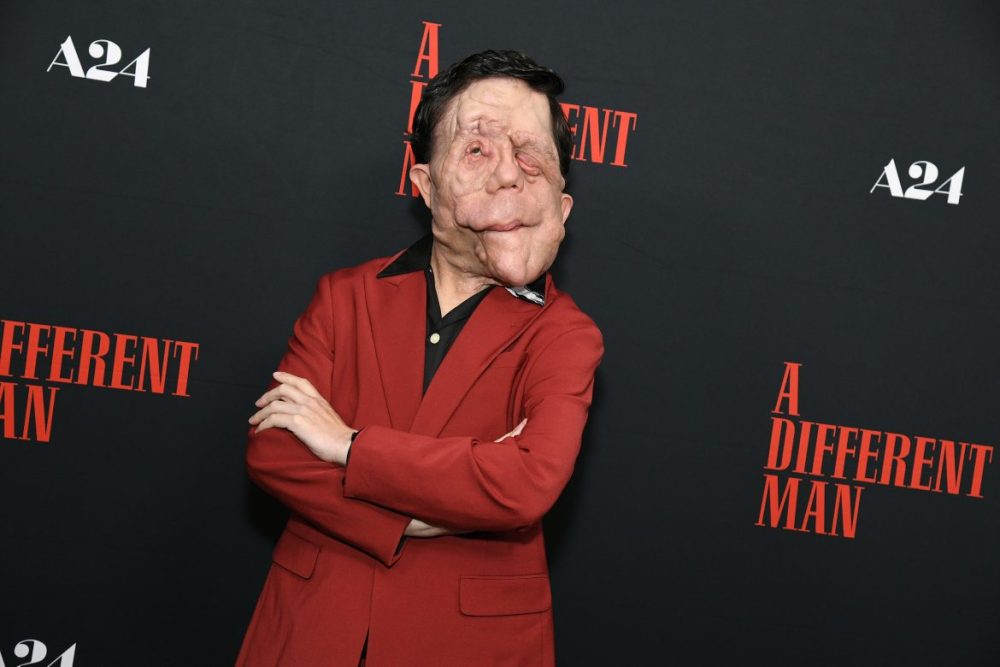TL;DR
A Different Man is a captivating Sundance hit that transcends typical narratives about facial differences. Sebastian Stan stars as Edward, who undergoes a transformative treatment, only to become fixated on an actor mirroring his past life, played by the remarkable Adam Pearson. The film delves deeply into identity, self-perception, and societal perceptions, offering nuanced commentary without resorting to pity or sentimentality. With a standout performance from Renate Reinsve and a gritty, 70s-inspired aesthetic, it’s a thought-provoking watch that encourages discussion. While the third act feels a bit drawn out, the film’s ambiguous, non-formulaic ending is a refreshing departure. Intrigued by this exploration of self and societal gaze? Dive into the full review to uncover every compelling detail.
The Sundance hit A Different Man is finally arriving in theaters. This film has been highly anticipated, and the compelling trailer, coupled with the positive reception at Sundance, generated considerable excitement. Fortunately, the film lives up to the hype.

A Different Man presents the fictional narrative of Edward (portrayed by Sebastian Stan), an individual with facial differences who is offered the opportunity to participate in an “experimental drug trial that could heal him.” Following the successful transformation of his face through this treatment, the film explores Edward’s experiences with his altered appearance. He develops an obsession with an actor in a stage production that mirrors his former life. Adam Pearson, an actor with NF1 (neurofibromatosis type 1, a condition causing skin tumors), embodies Oswald, the stage actor. This casting choice adds a meta-theatrical layer to a story that delves into identity, self-perception, and physical appearance. Pearson, known for openly discussing his NF1 diagnosis, has previously appeared in Under the Skin alongside Scarlett Johansson. The film also marks a welcome return of Renate Reinsve, acclaimed for her role in the exceptional Norwegian film Världens värsta människa (2021). Reinsve delivers a captivating performance in every scene.
The film is emotionally resonant, exploring a multitude of themes. It avoids the pitfall of eliciting simple pity for characters with facial differences, a refreshing and commendable approach. This is not a simplistic narrative like Wonder (2018). Adam Pearson’s character is not positioned as an underdog seeking acceptance solely based on his appearance. The film refrains from condescending attitudes towards those who look different or manipulating the audience through emotionally charged scenes. There are no overly sentimental musical cues accompanying scenes of self-reflection.
Furthermore, the film eschews a conventional plot structure. Edward’s (Sebastian Stan) objective is not simply to achieve “normality.” His transformation occurs relatively early in the film. The remainder of the narrative probes questions of identity, self-esteem, courage, and alienation. Without becoming pretentious or overly academic, the film offers insightful commentary on its own themes in a subtle and relevant manner. It is ideally suited for post-viewing discussion and analysis.

Adam Pearson delivers a compelling performance, where his appearance is secondary to his character. While his distinct appearance initially draws attention, it quickly becomes less significant as his character’s personality emerges. He embodies a compelling inner life, and it is hoped that he will be offered roles in the future where his appearance is not the central focus, as demonstrated in this film.
The film’s cinematography features a grainy, dark aesthetic, reminiscent of 1970s New York independent cinema. This stylistic choice is both fitting and aesthetically pleasing, lending the film a sense of authenticity. This visual approach provides a refreshing contrast to the overly polished, commercial aesthetic prevalent in many contemporary films. The style of A Different Man offers a welcome departure from the homogenous look that often characterizes modern cinema.

However, the third act introduces a degree of repetition, preventing the film from concluding on a definitive high note. It feels slightly protracted, lingering for an additional ten minutes. The final scenes lack escalation, a clear objective, or a conclusive resolution. There is no conventional climax, no cathartic moment. The film concludes somewhat abruptly, which, arguably, is entirely appropriate for this particular narrative.
As the end credits appeared, a sense of ambiguity prevailed. The film offers no easy resolutions or dramatic closure. It encourages dialogue and reflection, rather than providing a neatly packaged ending with emotionally manipulative scenes. The film raises questions that lingered long after the viewing, prompting continued contemplation. This is preferable to a film that concludes with a simplistic, formulaic resolution.

